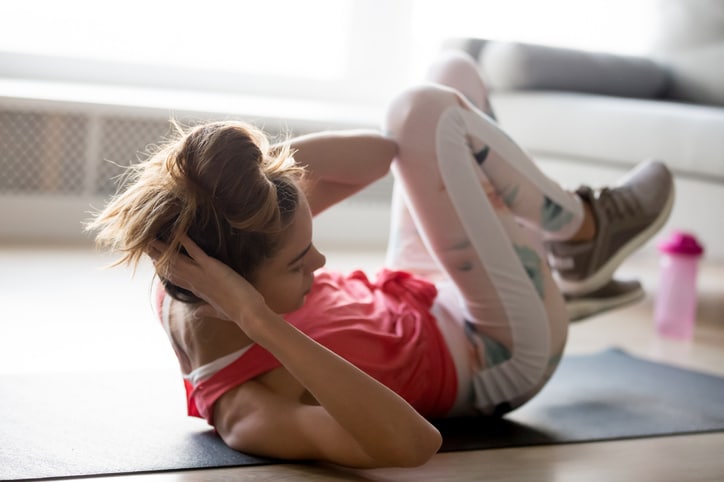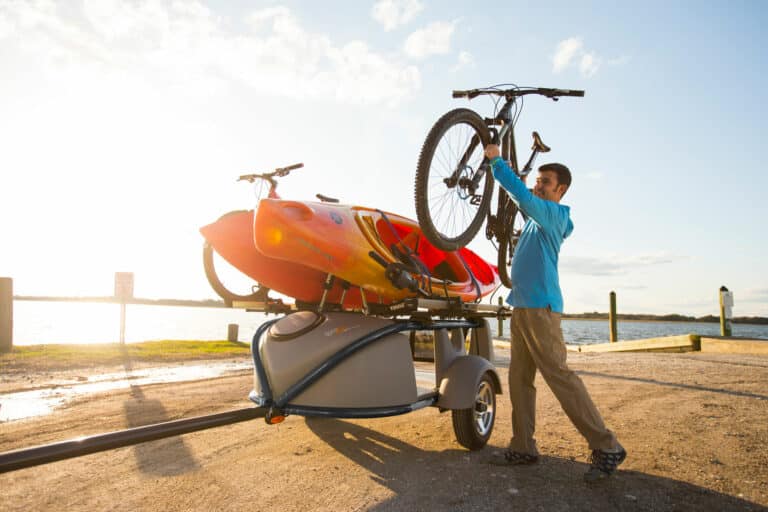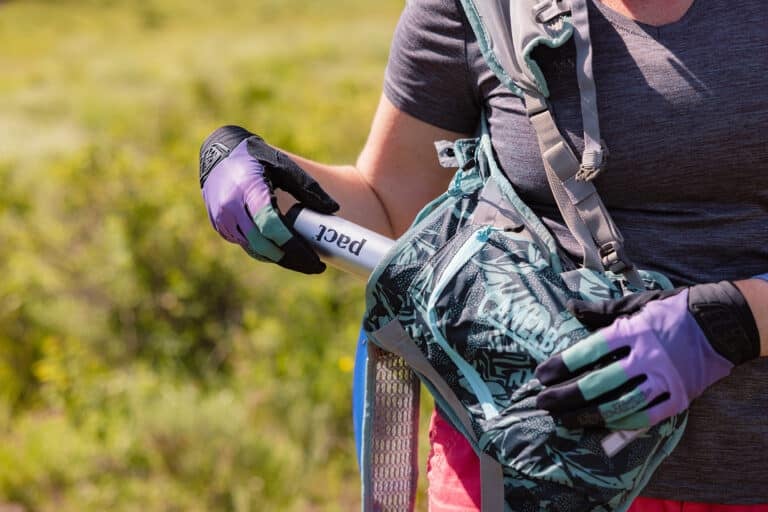Training for core strength has been emphasized in recent years for numerous sports and with good reason. Core strength is important in all athletic endeavors and is especially significant in cycling. Without core stabilization cyclists lose efficiency and endurance, increasing the possibility of injury.
Core Muscles and Their Functions
The core muscles are the muscles of the abdomen and back. In the abdomen, the rectus abdominus, the internal oblique, the external oblique and the transverse abdominus are the primary muscles. The erector spinae and the quadratus lumborum muscles are the primary muscles of the back. The general purpose of these muscles is to stabilize the thorax and pelvis during dynamic movements of the body
For cycling, the muscles must be continuously active, stabilizing the body to assist the dynamic movements of the leg and arms for pedaling and steering. Without core stabilization, it is difficult for the rider to maintain the forward position of the thorax and spine. An unstable core increases energy expenditure by the extremities. Endurance is reduced and the risk of injury may increase.
Training
Training for core strength is surprisingly easy. Many of the best exercises are simple floor exercises that require little or no equipment. They can be performed anywhere and require minimal supervision making their implementation relatively painless. Although, if the core muscles have not been the focus of recent conditioning, some delayed onset muscle soreness can be expected.
The Crunch
This exercise is probably the most familiar exercise for core conditioning. It is a safe effective version of the traditional sit-up. The starting position for the exercise is lying on the floor with the knees bent and feet flat on the floor. The hands are clasped and held firmly underneath the chin. The eyes should be focused on a spot on the ceiling. The exercise motion involves curling forward until the head and shoulders are no longer touching the floor. (Figure 1) The exercise is held for a three seconds before returning to the starting position. Three sets of ten repetitions should be performed.
Keeping the knees bent helps isolate the core muscles and the positioning of the hands prevents forward flexion of the head reducing strain on the neck and spine. The exercise affects the rectus abdominus, the muscle known for providing the “six pack” appearance.
High to Low Torso Twist
The starting position for the exercise is standing with the feet slightly wider than shoulder width apart. The arms fully extended above the head to the right. (Figure 2 A) The exercise motion involves bending forward while moving the arms across the body to the floor and to the outside edge of the foot. (Figure 2 B) The motion is then reversed to return to the starting position.
Three sets of ten repetitions should be performed. The exercise is then repeated on the opposite side. The exercise can also be performed weighted by holding a medicine ball, kettle bell or dumbbell. (Figure 2 C-D) The exercise affects the internal and external oblique abdominal muscles.
Abdominal Vacuum
This is another familiar exercise. It is commonly referred to as “sucking in the stomach”. The starting position is standing with the feet shoulder with apart. The exercise motion is to take a deep breath in while hollowing the abdomen and holding the position for a three seconds. (Figure 3 A-B) The exercise is repeated thirty times. The transverse abdominus is primary muscle involved in the exercise.
Cat and Camel
The starting position for the cat and camel is kneeling on the hands and knees. The first exercise motion is to flex the entire spine, bringing the head down and arching the back upward in a manner similar to that of a mad or frightened cat. (Figure 4 A) The second motion is to extend the entire spine lifting the head up and back while dropping the abdomen down to extend the middle and lower back regions. The depression created in between the spine and shoulders and hips resembles the depression between the two humps of a camel. (Figure 4 B)
The exercise should be performed thirty times. This exercise works the erector spinae muscles of the spine, especially while in the camel position.
Superman
The starting position for the superman exercise is lying face down on the floor with the arms extended above the head. The motion of the exercise is to raise the head slightly off the floor looking forward. At the same time the right arm and left leg are also raised. The body regions are raised only a few inches off the floor. (Figure 5 A) The position is held for three seconds. After relaxing the exercise is repeated using the head, left arm and right leg. Movement to this point represents one repetition and two sets of ten repetitions are recommended.
The second phase of the exercise involves raising the head and all four extremities simultaneously. (Figure 5 B) Viewing the final position makes the origin of the name Superman obvious. Each effort represents one repetition and thirty repetitions are recommended.
Like the Cat and Camel exercise Superman exercise develops the erector spinae muscles.
Side Plank (Bridge)
The starting position for the Side Plank is a side lying position where only the knee and forearm are in contact with the floor. The body (spine) is held as straight as possible for ten seconds before relaxing to the floor. (Figure 6 A) Each hold is a single repetition and twenty repetitions are recommended. The exercise is then repeated on the opposite side of the body.
The exercise can be taken a step further by using the feet instead of the knee as the floor contact. (Figure 6 B) Gradually building up to this version is necessary. The Side Plank exercise is a key exercise for developing the quadratus lumborum.
Adding core training to your exercise routine will greatly enhance the success of your cycling endeavors. Results are typically seen within four weeks if the exercises are performed two times per week and faster if they are performed three times per week. Once the exercises become easy to perform additional, more challenging exercises are available from a variety of sources to help in moving to the next level. Train hard to ride further…
General References
- Principles of Athletic Training; a Competency-Based Approach, 14th ed. William E. Prentice, McGraw-Hill, New York, 2011.
- Rehabilitation of the Spine; A practitioner’s Manual, 2nd Ed. Craig Liebenson, Lippincott Williams and Wilkins, Baltimore, 2007.
- ADAM Student Atlas of Anatomy, Todd R. Olson, Williams and Wilkins, Baltimore, 1996.
- The New Rules of Lifting for Life, Lou Schuler and Alwyn Cosgrove, Avery, New York, 2012.
- Anatomy of Strength Training; the 5 Essential Exercises, Pat Manocchia, Thunder Bay Press, San Diego, 2010.
- The Men’s Health Big Book of 15 Minutes Workouts, Selene Yeager and the editors of Men’s Health, Rodale, New York, 2011.
The authors
Dr. Lee Matthis is an avid cyclist practicing with Tuck Chiropractic in Christiansburg, Virginia. He also serves as the doctor for the cycling team at Virginia Tech.
Dr. K. Jeffrey Miller serves as the director of clinical operations of Tuck Chiropractic in Blacksburg, Virginia. Miller is a board certified chiropractic orthopedist and has been certified as a chiropractic sports physician and a strength and conditioning specialist.








